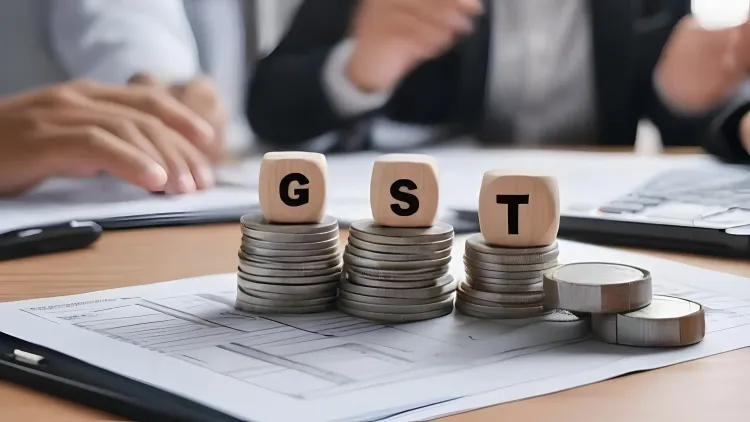How Does GST 2.0 Serve as a Booster for Bengal's Economy?

Synopsis
Key Takeaways
- GST rate cuts improve affordability for consumers.
- Local artisans and farmers benefit from increased competitiveness.
- Boosts job preservation and sales across districts.
- Supports traditional crafts and industries in West Bengal.
- Encourages exports of GI-tagged products.
New Delhi, Oct 4 (NationPress) With recent GST reductions on a variety of products, including Shantiniketan leather and Malda mango items, the government seeks to improve affordability for consumers while enhancing profit margins for artisans and farmers in West Bengal. This initiative is expected to lead to increased sales, preservation of jobs, and a revitalization of the rural economy, as stated in an official fact sheet released recently.
West Bengal has a rich tradition of crafts, handlooms, and agriculture-based industries. From the terracotta temples of Bishnupur to the detailed embroidery of Nakshi Kantha, and from the vibrant masks of Purulia to the globally renowned Darjeeling tea, Bengal's artisanal and industrial legacy supports millions of livelihoods. The recent GST changes further solidify Bengal's reputation as a center of creativity and business, ensuring that local communities are positioned to thrive both at home and abroad.
The GST rate reductions will directly benefit artisans, farmers, and small businesses in Bengal, enhancing the competitiveness of their products in both local and international markets. This will not only celebrate Bengal's rich artisanal traditions but also reinforce the economic fabric of various districts.
Nakshi Kantha, a defining embroidery craft of Bengal, is predominantly practiced in rural areas like Birbhum, Murshidabad, and Nadia. It serves as a vital income source for rural women, often organized in self-help groups or family units. The reduction of GST from 12% to 5% is set to lower prices and enhance its marketability against machine-made or mass-produced imitations, thus benefiting both domestic and international trade, particularly in regions like Europe, the US, and Japan.
West Bengal is also the core of India's jute industry, which provides direct jobs to over 250,000 workers in organized mills and supports around 4 million farming families. The GST cut from 12% to 5% is anticipated to decrease retail prices, making eco-friendly jute products—such as bags—more competitive against plastic or synthetic alternatives, thereby spurring domestic demand and promoting exports.
The hosiery and ready-made garment sectors are among the largest in West Bengal, employing approximately 500,000 workers. Kolkata is recognized as the birthplace of India's hosiery industry, with major hubs in Metiabruz, Baruipur, and Siliguri. Increasing the threshold for the 5% GST slab to Rs 2500 represents a significant advancement.
Darjeeling tea, known as the 'Champagne of Teas', hails from the picturesque hills of Darjeeling and Kalimpong. While the GST on basic tea remains at 5%, reductions for tea extracts and concentrates from 18% to 5% will make these products more affordable for consumers, enhancing competitiveness in the premium beverage market.
Malda, often referred to as Bengal's 'Mango Capital', boasts over 200 varieties of mango, with celebrated types like Fazli, Laxman Bhog, and Khirsapati (Himsagar) bearing GI tags that symbolize the region. The GST cut from 12% to 5% on processed mango products, including juices and jams, will lower retail prices and stimulate consumer demand.
The GI-tagged varieties are exported to the Middle East, the UK, Europe, and now to emerging markets such as Sweden and New Zealand.
The Shantiniketan leather industry, located in the Birbhum district’s Santiniketan-Bolpur area and nearby villages like Surul and Ballavpur, is renowned for its hand-embossed batik and applique designs on tanned leather. Grounded in the rural development initiatives of Visva-Bharati University, this craft is a crucial livelihood source in regions where job options are limited.
This sector features a decentralized model of small MSMEs, providing direct employment to hundreds of artisans. The larger leather industry around Kolkata employs roughly 500,000 individuals.
Other handicrafts such as Madurkathi Mats, Purulia Chhau Masks, Wooden Masks of Kushmandi, and Sholapith Craft are also set to benefit from the GST rate reductions.









